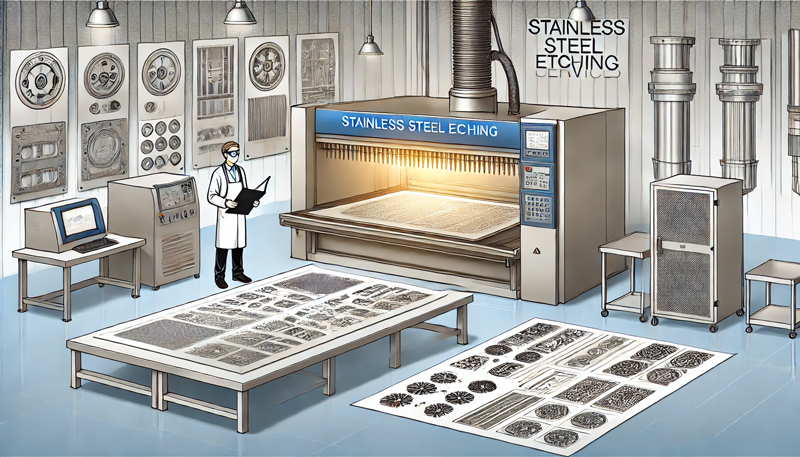
Acid etching stainless steel is a process used to create designs or markings on the metal's surface by using acid solutions to remove material. Here’s a brief overview of the process:
Stainless Steel Item: Clean and free of oils and dirt.
Acid Solution: Common choices include ferric chloride, hydrochloric acid, or nitric acid.
Resist Material: Vinyl or a specialized etching resist to protect areas you don’t want to etch.
Protective Gear: Gloves, goggles, and a mask to protect against fumes and skin contact.
Application Tools: Brushes or spray bottles for applying the acid.
Preparation:
Clean the stainless steel surface thoroughly to remove any contaminants.
Apply the resist material in the desired pattern. This can be done using stencils or by hand.
Etching:
Carefully apply the acid solution to the exposed areas of the stainless steel. This can be done using a brush or by submerging the item in the acid bath.
Monitor the etching process, as the time will vary based on the acid used and the depth of etching desired.
Neutralization:
After the desired etching depth is achieved, neutralize the acid with a baking soda solution or water to stop the reaction.
Rinse the piece thoroughly with water.
Cleanup:
Remove the resist material to reveal the etched design.
Clean the item to remove any remaining acid or residue.
Always work in a well-ventilated area or under a fume hood.
Wear protective clothing, gloves, and eye protection to prevent acid burns and inhalation of fumes.
Dispose of acids and chemicals according to local regulations.
Test the process on a scrap piece of stainless steel first to refine your technique.
The concentration of the acid and the etching time will greatly affect the outcome, so adjust accordingly for different effects.
This method is popular for creating custom designs on items like jewelry, tools, and decorative pieces.
Contact: andy_Lai
Phone: 18938693450
E-mail: yw9@zldsmt.com
Add: Building A3, Huafa Industrial Park, Fuyong Town, Fuyuan Road, Fuyong Town, Baoan District, Shenzhen,China